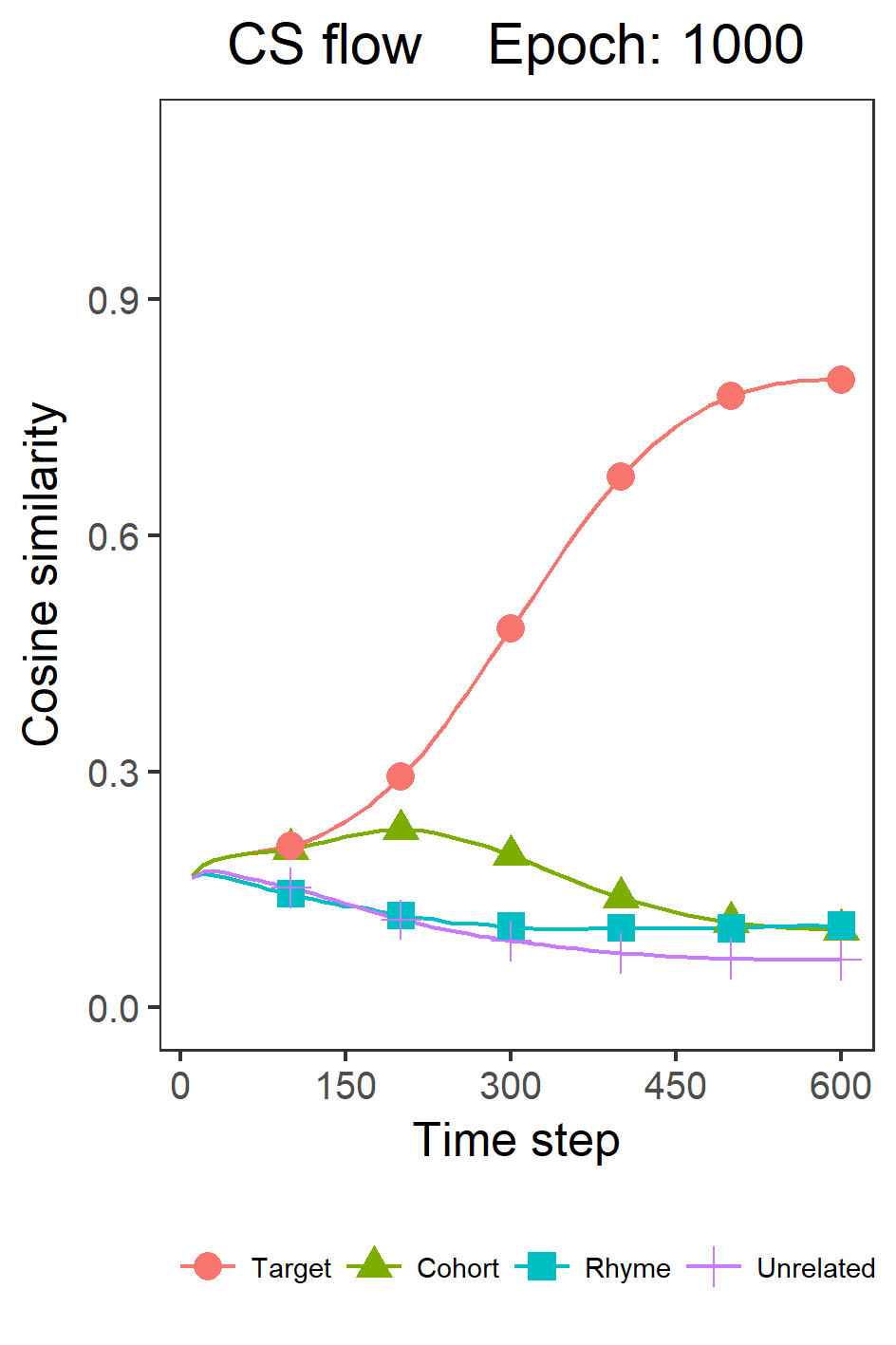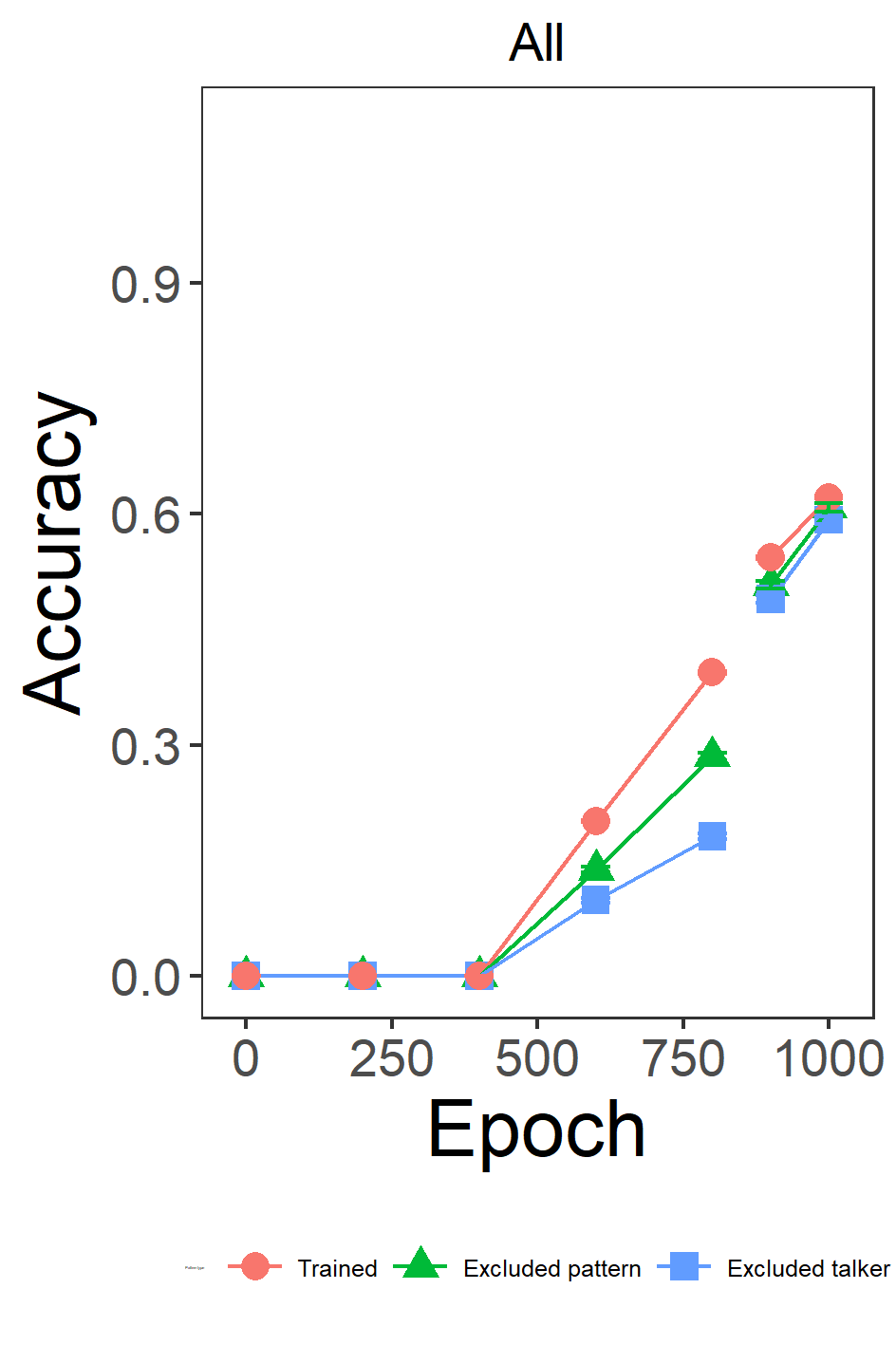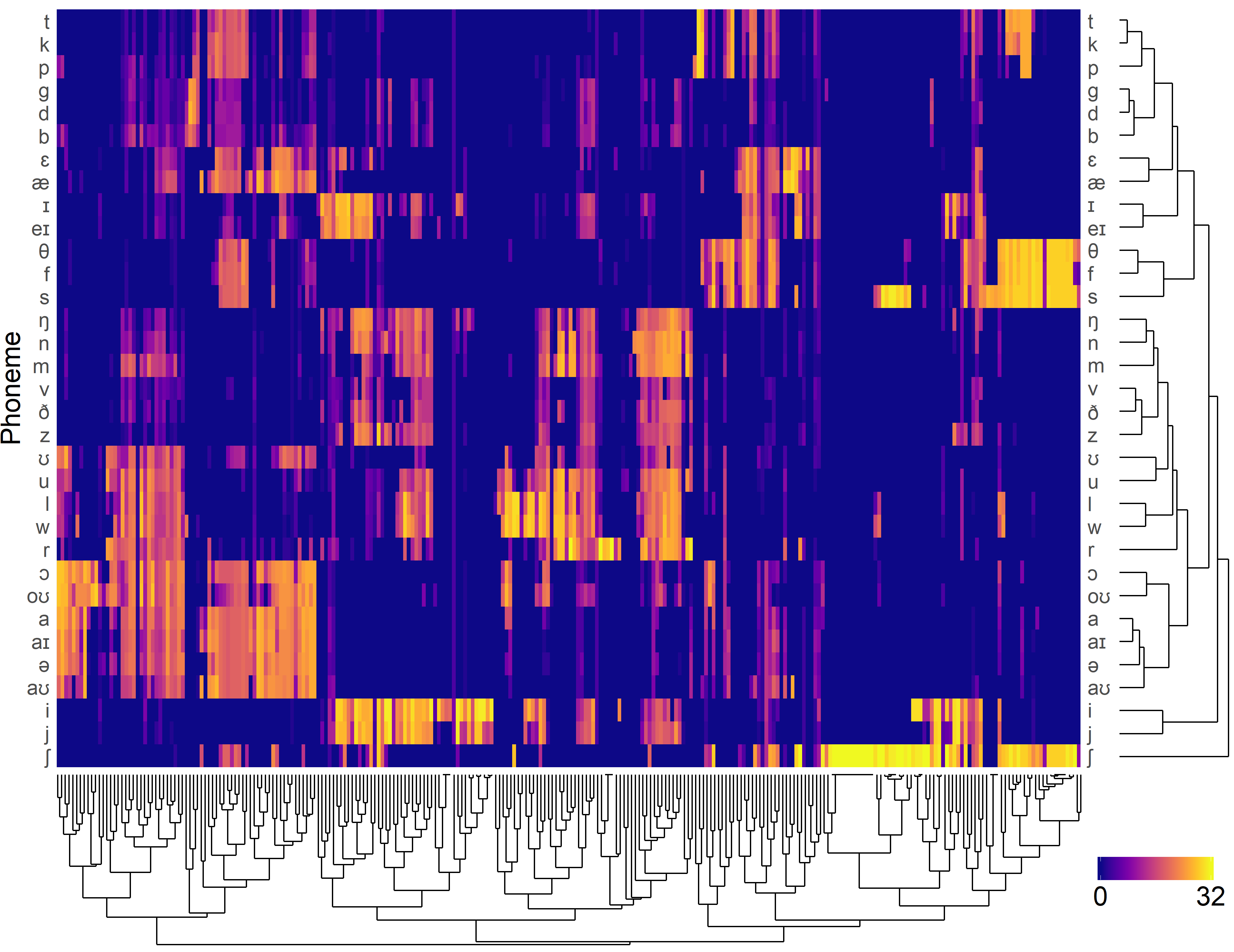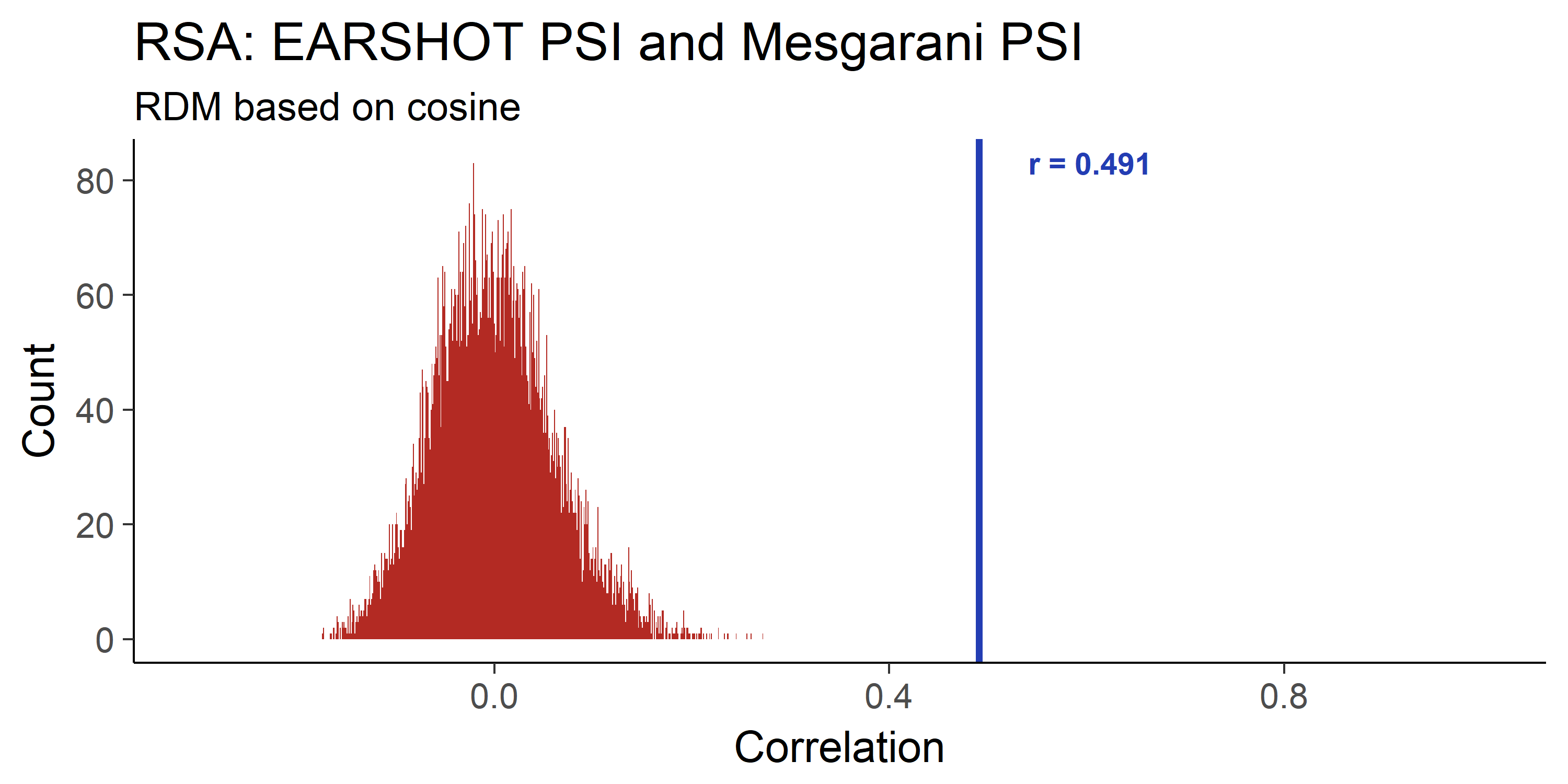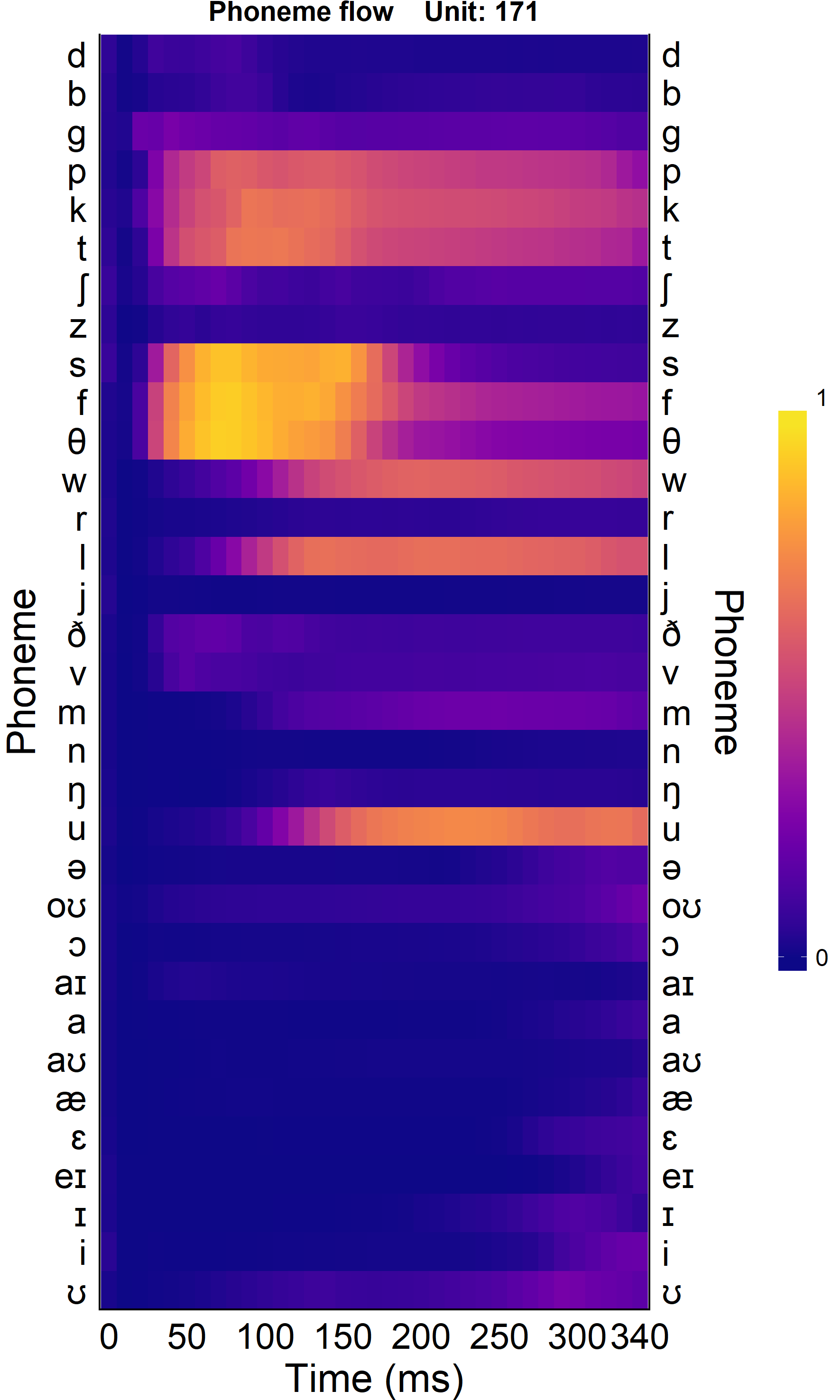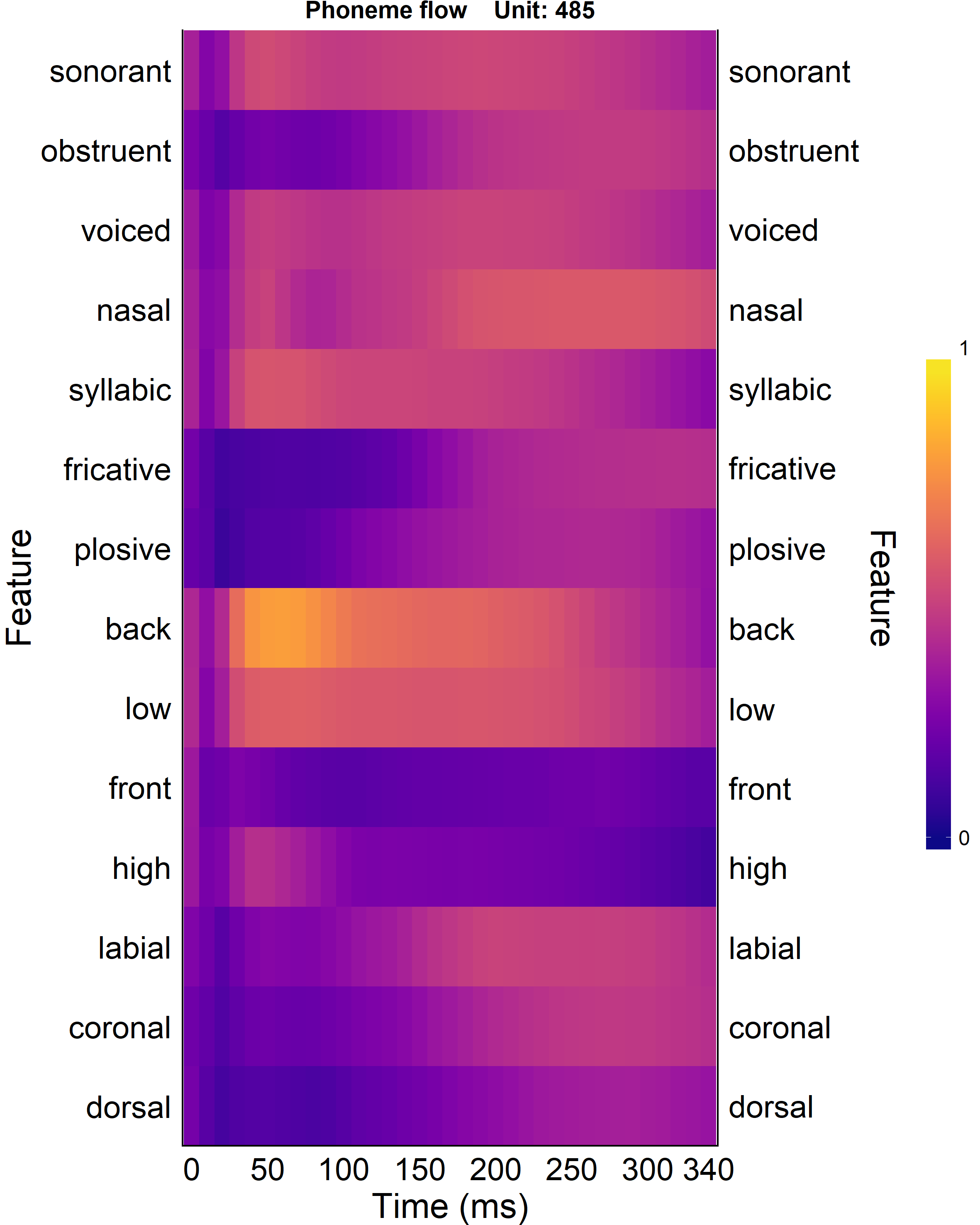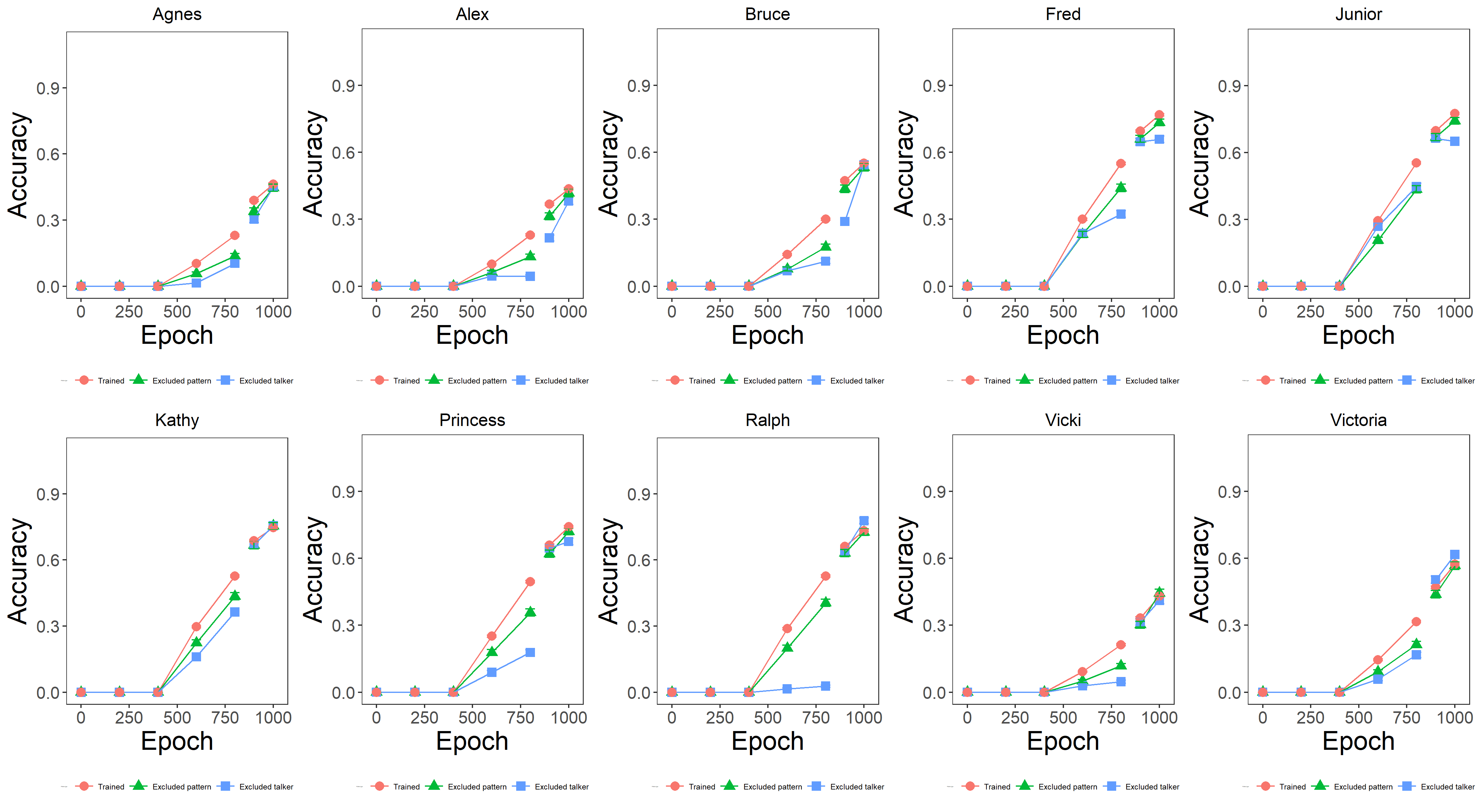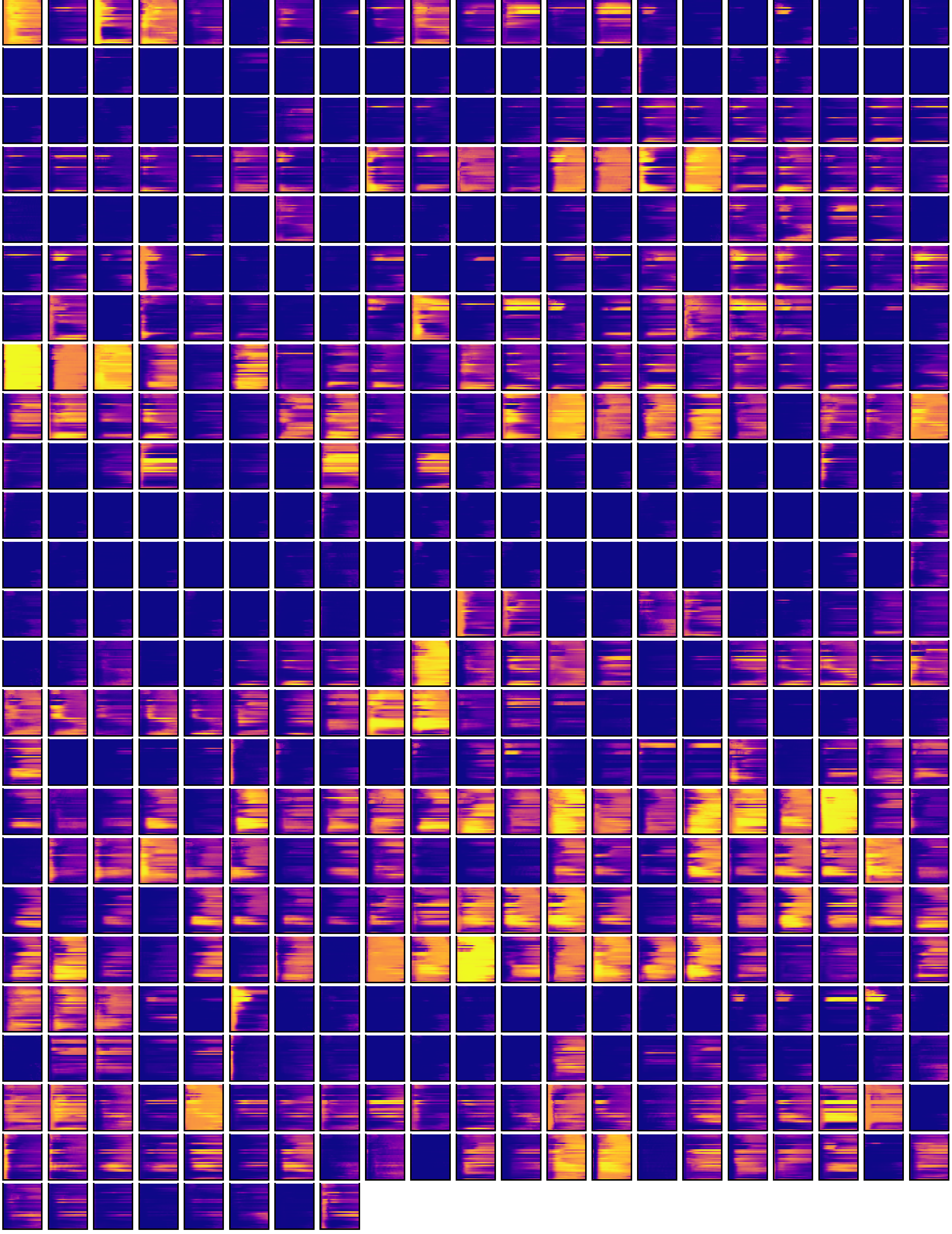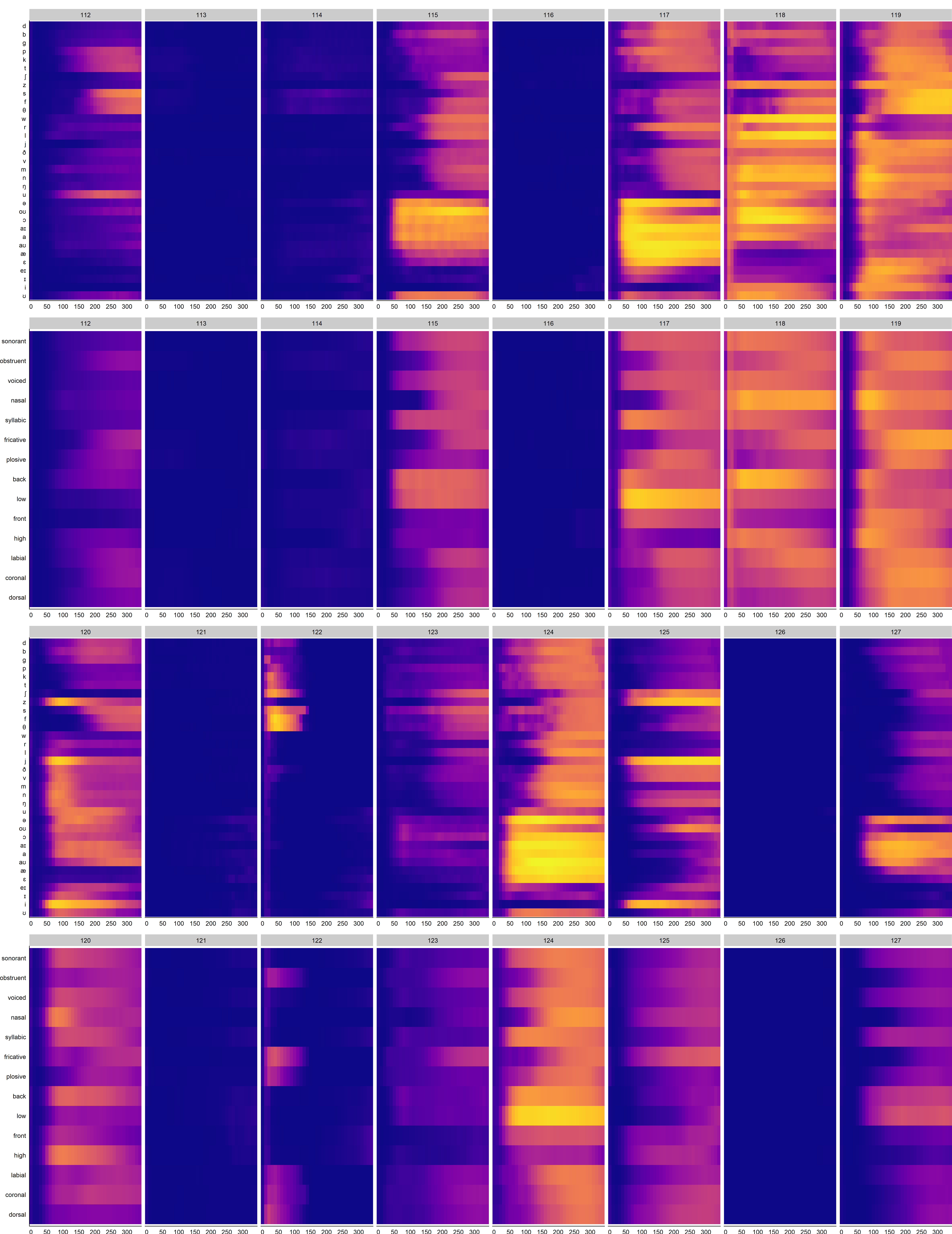Magnuson, J.S., You, H., Luthra, S., Li, M., Nam, H., Escabí, M., Brown, K., Allopenna, P.D., Theodore, R.M., Monto, N., & Rueckl, J.G. (2020). EARSHOT: A minimal neural network model of incremental human speech recognition. Cognitive Science, 44, e12823. http://dx.doi.org/10.1111/cogs.12823 -- PDF -- Supplmentary materials
-
Download input file
Pattern_Dict.IM_Spectrogram.OM_SRV.AN_10.Size_10000.WL_10.picklehere -
Download diphone wav files for hidden analysis here
-
All the commands below are done at the terminal (command console for Windows).
-
Python 3.x and several python libraries must be installed in your environment by following command:
GPGPU using: pip install tensorflow-gpu, librosa, matplotlib CPU only: pip install tensorflow, librosa, matplotlib
You can skip this part when you are using a pre-generated input file at Before starting
python Pattern_Generator.py [parameters]
-
-h- Prints a verbose help message about the other parameters.
-
-p,--path <path>- Set the path to the wav files that construct the inputs.
- Required.
-
-m,--mode <string>- Semantic mode. Can be either "SRV" (creates sparse random vectors) or "Word2Vec" (pre-trained word vectors from, e. g., a Distributional Semantics Model)
- Optional, defaults to SRV.
-
-w,--winlength <int>- Sets the window length for the spectrogram in milliseconds.
- Defaults to 10.
-
-f,--pronfile <filename>- Name/location of lexicon/pronunciation file. The file is a list of words with phonological transcriptions.
- Optional, defaults to Pronunciation_Data_1K.txt.
-
-s,--semdim <int>- Semantic dimension - length of the semantic vectors. This parameter is ignored if --mode=Word2Vec, since the semantic dimension is then determined by the size of the supplied vectors.
- Optional, defaults to 300.
-
-n,--nnz <int>- Number of nonzero (= 1) elements in the sparse random vectors. Even if --mode=Word2Vec, this parameter may be used since the model supplements the set of semantic vectors with SRVs for any out-of-vocabulary items.
- Optional, defaults to 10.
-
-v,--w2v <filename>- Location of vector representations of words used if --mode=Word2Vec. This can be a gensim model or a pickle with a word:vector dictionary; the model auto-sniffs the filetype.
- Required if --mode=Word2Vec, otherwise ignored/unused.
-
-c,--noclip <bool>- Keep full-range semantic vectors (True) or clip to {0,1} (False).
- Optional, defaults to True, has no effect if --mode="SRV".
Basic pattern file with default pronunciation file, SRVs of length 300 with 10 nonzero elements, 10 ms spectral windows:
python Pattern_Generator.py --path=./Pattern/Wav
Patterns using DSM vectors for semantics and a custom pronunciation file:
python Pattern_Generator.py --path=./Pattern/Wav --pronfile=My_Lexicon.txt --mode=Word2Vec --w2v='my_dsm_vectors.pickle'
The exported file name is long but transparent; it contains information about most of the parameters (number of patterns, semantic mode and sizes, window length). It does not indicate either the pronunciation file or the file used for semantic vecors (if --mode=Word2Vec).
python EARShot.py [parameters]
-
-ht LSTM|GRU|SCRN|BPTT- Determines the type of hidden layer. You can enter either LSTM, GRU, SCRN, or BPTT.
- This parameter is required.
-
-hu <int>- Determines the size of the hidden layer. You can enter a positive integer.
- This parameter is required.
-
-tt <int>- Set the frequency of the test during learning. You can enter a positive integer.
- This parameter is required.
-
-se <int>- Set the model's start epoch. This parameter and the 'mf' parameter must be set when loading a previously learned model.
- The default value is 0.
-
-me <int>- Set the ending epoch of the model. The default is 20000.
-
-em P|T|M- Set pattern exclusion method. You can choose between P (pattern based), T (talker based), or M (mix based).
- If set to P, 1/10 of each talker pattern will not be trained.
- When set to T, all patterns of one talker are excluded from the learning. The talker can be set via the 'et' parameter.
- When set to M, patterns are excluded as a mixture of the two methods.
- If not set, all patterns will be learned.
-
-et <talker>- Set which talker pattern is excluded from the learning.
- Applies if 'em' parameter is T or M, otherwise this parameter is ignored.
-
-ei- If you enter this parameter, all exclusion settings above will be ignored.
- This is the parameter used to over-training all patterns after normal training.
- It is recommended that you do not assign the 'em' parameter if you want to learn all patterns from the beginning.
-
-idx <int>- Attach an index tag to each result.
- This value does not affect the performance of the model.
python EARShot.py -ht LSTM -hu 512 -tt 1000 -se 0 -me 4000 -em M -et Fred -idx 0
python EARShot.py -ht LSTM -hu 512 -tt 500 -se 2000 -me 2500 -em M -et Bruce -ei -idx 0
python Result_Analysis.py [parameters]
-
-d <path>- Results directory to run the analysis on.
- This parameter is required.
- Ex.
./Results/IDX_0/HM_LSTM.H_512.EM_M.ET_AGNES.IDX_0
-
-a <float>- Criterion in reaction time calculation of absolute method.
- The default is 0.7.
-
-r <float>- Criterion in reaction time calculation of relative method.
- The default is 0.05.
-
-tw <int>- Width criterion in reaction time calculation of time dependent method used in the paper.
- The default is 10.
-
-th <float>- Height criterion in reaction time calculation of time dependent method used in the paper.
- The default is 0.05.
python Result_Analysis.py -d ./Results/IDX_0/HM_LSTM.H_512.EM_M.ET_AGNES.IDX_0
python Result_Analysis.py -d ./Results/IDX_2/HM_LSTM.H_512.EM_M.ET_BRUCE.IDX_2 -tw 5 -th 0.1
Hidden analysis - Diphone based
python Hidden_Analysis.py [parameters]
-
-d <path>- Results directory to run the analysis on.
- This parameter is required.
- Ex.
./Results/IDX_0/HM_LSTM.H_512.EM_M.ET_AGNES.IDX_0
-
-e <int>- The epoch to run the analysis on.
- This parameter is required.
-
-v <path>- diphone wav directory to be used for hidden analysis
- This parameter is required.
- Ex.
./Diphone_Wav
python Hidden_Analysis.py -d ./Results/IDX_0/HM_LSTM.H_512.EM_M.ET_AGNES.IDX_0 -e 2000 -v ./Diphone_wav
Hidden analysis - Alignment based
Before analysis, alignment data must be generated.
python Alignment_Data_Extractor.py -d <path>
-d <path>- Alignment data directory
- Ex.
./WAVS_ONLY_Padded_Alignment
python Hidden_Analysis.Alignment.py [parameters]
-
-d <path>- Results directory to run the analysis on.
- This parameter is required.
- Ex.
./Results/IDX_0/HM_LSTM.H_512.EM_M.ET_AGNES.IDX_0
-
-e <int>- The epoch to run the analysis on.
- This parameter is required.
-
-v <path>- Alignment data directory to be used for hidden analysis
- This parameter is required.
- Ex.
./WAVS_ONLY_Padded_Alignment
python RSA_Analysis.py [parameters]
-
-d <path>- Results directory to run the analysis on.
- This parameter is required.
- Ex.
./Results/IDX_0/HM_LSTM.H_512.EM_M.ET_AGNES.IDX_0
-
-e <int>- The epoch to run the analysis on.
- To proceed with the RSA analysis, you must first perform a hidden analysis on the configured epoch.
- This parameter is required.
-
-c <float>- Criterion of the PSI and FSI map to be used.
-
-pn <int>- Number of permutation tests
- The default is 1000000.
python RSA_Analysis.py -d ./Results/IDX_0/HM_LSTM.H_512.EM_M.ET_AGNES.IDX_0 -e 2000 -c 0.0 -pn 10000
python Hidden_Analysis.Alignment.py -d ./Results/IDX_0/HM_LSTM.H_512.EM_M.ET_Fred.IDX_0 -e 4000 -v ./WAVS_ONLY_Padded_Alignment
python RSA_Analysis.py [parameters]
-
-d <path>- Results directory to run the analysis on.
- This parameter is required.
- Ex.
./Results/IDX_0/HM_LSTM.H_512.EM_M.ET_AGNES.IDX_0
-
-e <int>- The epoch to run the analysis on.
- To proceed with the RSA analysis, you must first perform a hidden analysis on the configured epoch.
- This parameter is required.
-
-c <float>- Criterion of the PSI and FSI map to be used.
-
-pn <int>- Number of permutation tests
- The default is 1000000.
python RSA_Analysis.py -d ./Results/IDX_0/HM_LSTM.H_512.EM_M.ET_AGNES.IDX_0 -e 2000 -c 0.0 -pn 10000
-
Use
./R_Script/Acc_and_CS_Flow(Fig.3).R -
Modify the parameters in line 116 - 124
-
Run. The result will be in
base_Dir.
-
Use
./R_Script/PSI_and_FSI(Fig.4).R -
Modify the parameters in line 36 - 42
-
Run. The result will be in each talker's hidden analysis directory.
-
Use
./R_Script/RSA_Permutation_Test(Fig.5).R -
Modify the parameters in line 7 - 13
-
Run. The result will be in each talker's hidden analysis directory.
-
Use
./R_Script/Phoneme_and_Feature_Flow(Fig.6).R -
Modify the parameters in line 10 - 16
-
Run. The result will be in each talker's hidden analysis directory.
This is different 'Accuracy and cosine similarity flow'. This analysis checks the accuracy of the talker's data in all simulations.
-
Use
./R_Script/Acc_Flow_Integration_by_Talker(Fig.S2.1).R -
Modify the parameters in line 53 - 61
-
Run. The result will be in
base_Dir.
-
Use
./R_Script/Phoneme_and_Feature_Flow_All_Tile(Fig.S2.2-3).R -
Modify the parameters in line 22 - 28
-
Run. The result will be in each talker's hidden analysis directory.
-
Use
./R_Script/Phoneme_and_Feature_Flow_Compare(Fig.S2.4).R -
Modify the parameters in line 10 - 16
-
Run. The result will be in each talker's hidden analysis directory.
